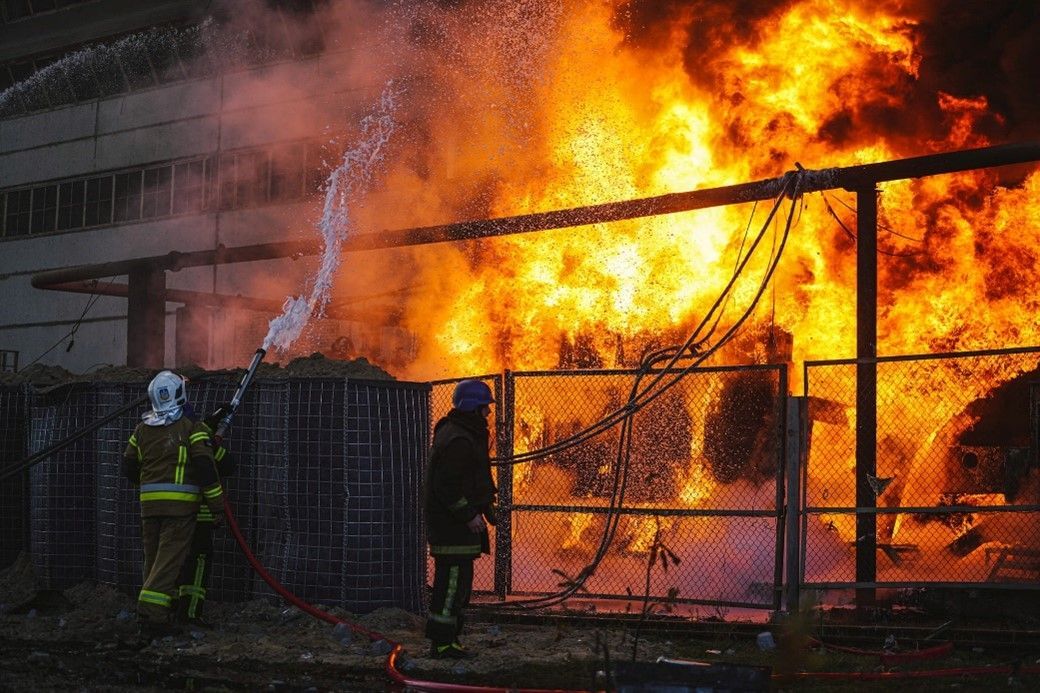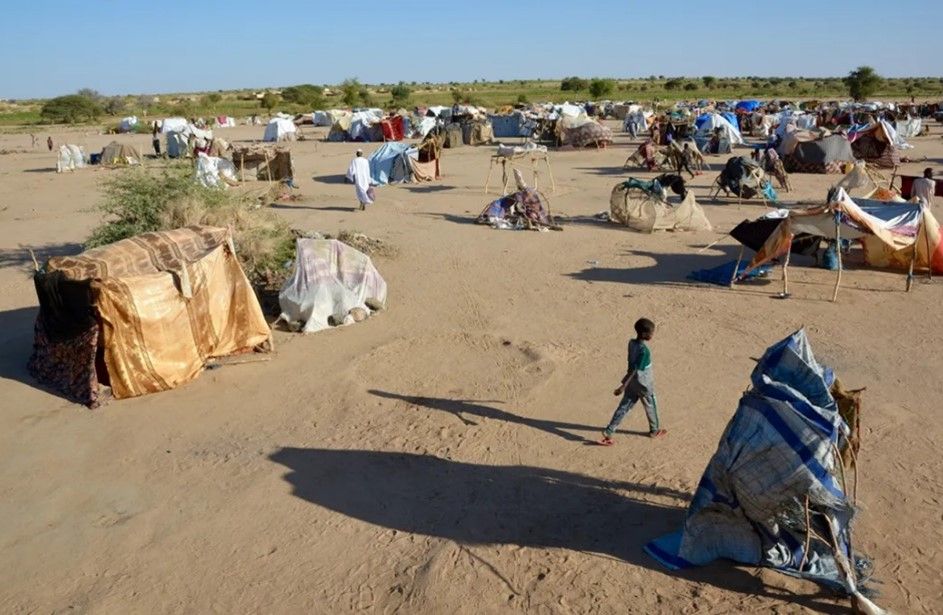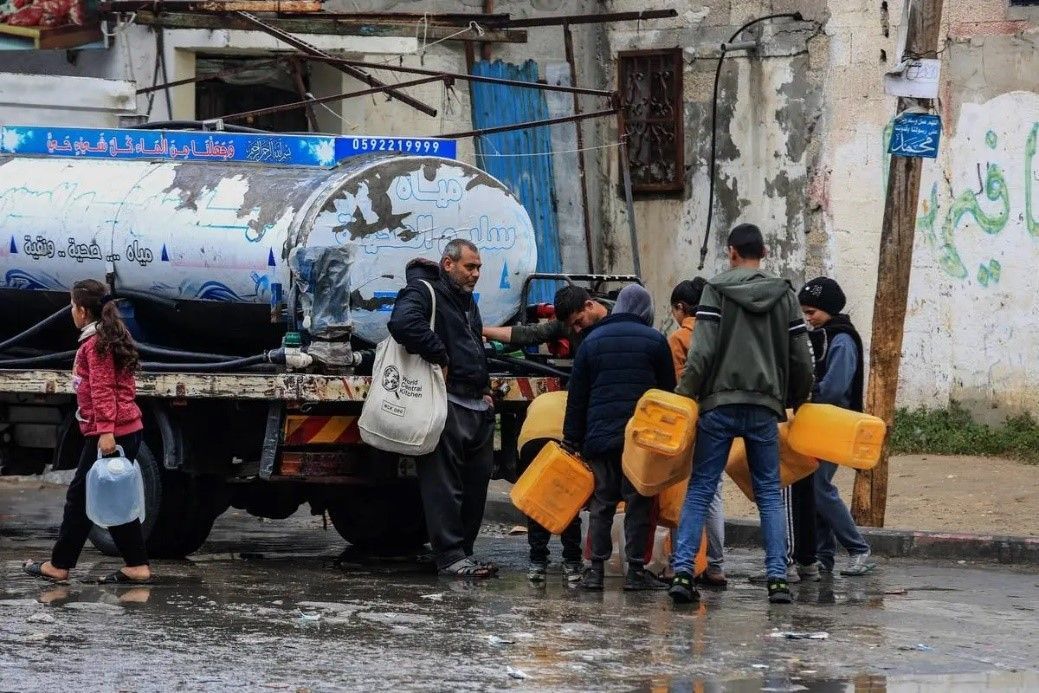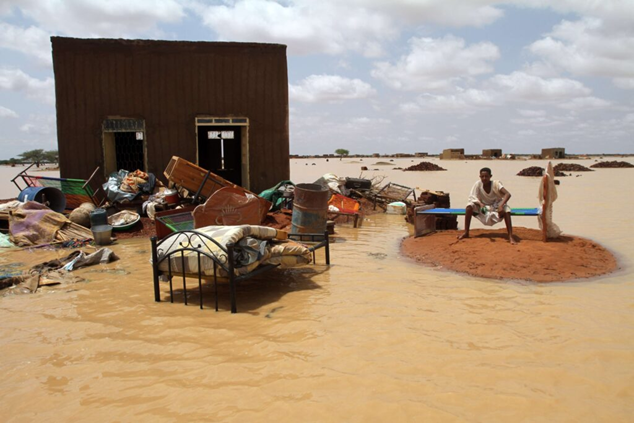Climate Change and War: A Complex Interplay
How Conflicts in Ukraine, Palestine, and Sudan in 2024 are Shaped by and Impact the Global Climate Crisis
In 2024, the world faces ongoing conflicts in Ukraine, Palestine, and Sudan, which are not only tragic in human terms but also profoundly interconnected with the global climate crisis. As global temperatures rise and environmental degradation worsens, climate change acts as both a trigger and amplifier of conflict. At the same time, wars damage ecosystems, disrupt environmental governance, and increase greenhouse gas (GHG) emissions, intensifying the environmental toll.
In 2024, the world faces ongoing conflicts in Ukraine, Palestine, and Sudan, which are not only tragic in human terms but also profoundly interconnected with the global climate crisis. As global temperatures rise and environmental degradation worsens, climate change acts as both a trigger and amplifier of conflict. At the same time, wars damage ecosystems, disrupt environmental governance, and increase greenhouse gas (GHG) emissions, intensifying the environmental toll.
Climate Change as a Conflict Trigger
Climate change has long been recognized as a "threat multiplier," intensifying underlying tensions, particularly in regions already facing political instability and resource scarcity. For example, Sudan has experienced prolonged droughts that severely impact agriculture, increasing competition over resources like water and fertile land. These conditions can foster disputes between communities, particularly in rural areas, fuelling the ongoing conflict (World Resources Institute, 2021).
Similarly, in Ukraine, the war is disrupting access to critical energy sources, including clean energy infrastructure. Ukraine has been on a path toward expanding renewable energy; however, the war has halted many projects, making the energy transition harder and deepening reliance on fossil fuels (IEA, 2022).

News Spotlight: War’s Devastating Environmental Impact
Recent news reports show how wars in 2024 are exacerbating environmental degradation. For instance, the war in Ukraine has led to the destruction of key energy infrastructure, including the Zaporizhzhia Nuclear Power Plant, raising concerns of catastrophic contamination (BBC News, 2024). In Palestine, the bombardment of cities has destroyed natural habitats and damaged water supplies, while in Sudan, deforestation and desertification are rapidly increasing due to uncontrolled migration and urban sprawl as millions flee the violence (Al Jazeera, 2024).
These crises illustrate that while war is an immediate human disaster, the long-term environmental consequences can linger for decades, adding stress to already fragile ecosystems.

Wars Escalate Greenhouse Gas Emissions
One often overlooked consequence of war is its impact on GHG emissions. A recent study published by the Journal of Environmental Science and Policy revealed that military operations, including the movement of troops and equipment, fuel massive carbon emissions. In Ukraine, the burning of fossil fuels to power military operations and replace damaged infrastructure has pushed carbon emissions back up, negating progress made in recent years (Environmental Science and Policy, 2023).
Additionally, damage to Ukraine’s forests and agricultural land has reduced carbon sinks, while the destruction of renewable energy plants has forced a temporary shift to more carbon-intensive energy sources, further compounding the issue (UNEP, 2023).

Climate Refugees: The Intersection of Conflict and Migration
Wars create large-scale displacement, and when combined with climate impacts, the situation worsens. In Sudan, nearly 4 million people have been displaced by the ongoing conflict, exacerbating environmental stress in neighboring countries where refugee camps are located. The lack of sustainable infrastructure in these camps leads to deforestation and water pollution, which not only damages the environment but also undermines the quality of life for displaced people (UNHCR, 2024). According to the World Bank, climate-induced migration is expected to increase dramatically if climate action and conflict resolution are not prioritized in global policy discussions.
Sudan’s Extreme Weather in 2024: A Double Blow of Floods and Droughts
In 2024, Sudan faced a devastating combination of floods and droughts, further exacerbating the ongoing humanitarian crisis caused by conflict. Climate change has intensified the severity and frequency of extreme weather in the region. According to recent reports, Sudan experienced one of the worst floods in decades, displacing thousands of people, destroying infrastructure, and contributing to the spread of waterborne diseases (UN, 2024). At the same time, large parts of the country suffered from prolonged droughts, crippling agricultural production and deepening food insecurity.
The interaction between extreme weather events and ongoing conflict has created a "climate-conflict nexus." With resources already scarce due to war, floods and droughts have amplified tensions among communities, particularly in rural areas. Water sources have become unreliable, and competition over fertile land has increased, leading to further displacement and violence (World Resources Institute, 2024).
Additionally, the environmental damage caused by these extreme weather events is immense. Floodwaters have destroyed homes, crops, and infrastructure, while the drought has led to land degradation, making recovery even more difficult. This situation has placed further strain on refugee camps and humanitarian efforts already struggling to cope with the impacts of conflict (UNHCR, 2024).

Linking Science to Solutions: Building Climate Resilience in Post-Conflict Recovery
Scientific research emphasizes the need for integrating climate resilience into peace-building and recovery efforts in conflict zones. Rebuilding efforts should prioritize sustainable energy solutions such as solar and wind, as well as water conservation and reforestation projects. For example, Ukraine’s post-war recovery could serve as a model for green reconstruction by focusing on renewable energy and infrastructure (World Bank, 2023).
In Palestine, efforts to manage water sustainably through modern technologies like desalination could help prevent future conflicts, while reforesting degraded land in Sudan could create jobs, reduce emissions, and restore ecosystems (FAO, 2023).
The conflicts in Ukraine, Palestine, and Sudan demonstrate that climate change is not just an environmental issue but a security challenge. As wars exacerbate environmental degradation and climate change triggers resource conflicts, we must address both together. Integrating climate resilience into post-conflict recovery will not only prevent future wars but also contribute to the global fight against climate change.
References
- Al Jazeera. (2024). Sudan's Environmental Crisis Amid Conflict. https://www.aljazeera.com/news/2024/03/sudan-conflict-environment
- BBC News. (2024). Ukraine War and the Threat to Nuclear Facilities. https://www.bbc.com/news/world-ukraine-2024
- Environmental Science and Policy. (2023). War and Emissions: The Carbon Cost of Conflict. Journal of Environmental Science and Policy, 12(3), 98-110.
- Food and Agriculture Organization (FAO). (2023). Reforesting Conflict Zones: A Path to Climate Resilience. https://www.fao.org/sudan-reforestation
- International Energy Agency (IEA). (2022). Ukraine’s Energy Crisis: Reversing the Renewable Transition. https://www.iea.org/ukraine-crisis-report
- United Nations Environment Programme (UNEP). (2023). Environmental Impact of War: Ukraine and Beyond. https://www.unep.org/resources/ukraine-war-impact
- United Nations High Commissioner for Refugees (UNHCR). (2024). Sudan: Conflict, Displacement, and Environmental Impact. https://www.unhcr.org/sudan-2024
- World Bank. (2023). Building Back Better: Climate Resilience in Post-War Ukraine. https://www.worldbank.org/reports/ukraine-recover.



